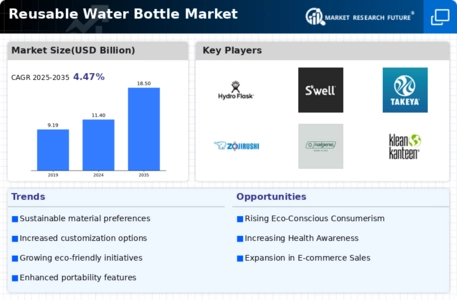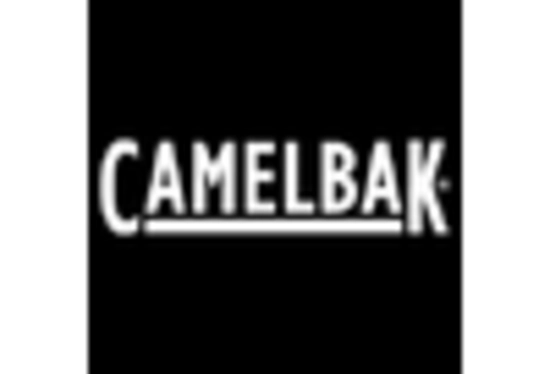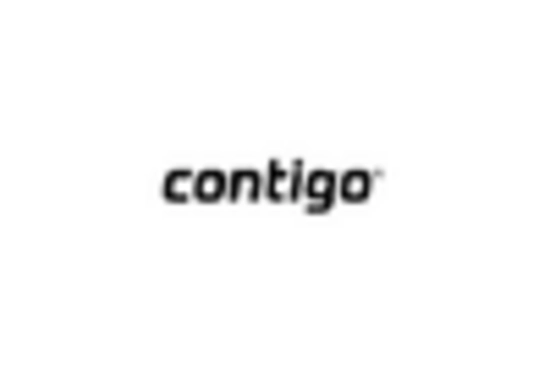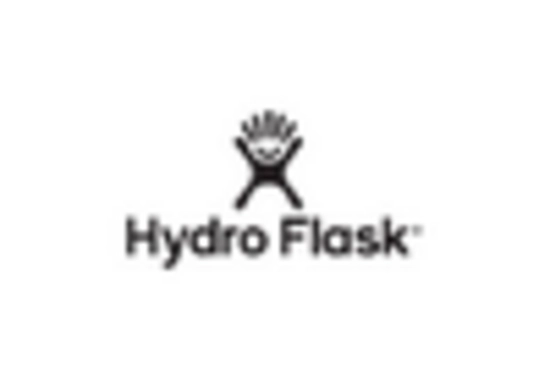The Reusable Water Bottle Market is currently characterized by a dynamic competitive landscape, driven by increasing consumer awareness regarding sustainability and health. Major players such as Nalgene (US), Hydro Flask (US), and CamelBak (US) are strategically positioning themselves through innovation and product diversification. Nalgene (US) focuses on creating durable, BPA-free bottles that appeal to outdoor enthusiasts, while Hydro Flask (US) emphasizes premium insulated products that cater to a lifestyle-oriented consumer base. CamelBak (US) leverages its heritage in hydration solutions to expand into new markets, particularly targeting fitness and outdoor activities. Collectively, these strategies foster a competitive environment that prioritizes quality, functionality, and brand loyalty.
In terms of business tactics, companies are increasingly localizing manufacturing to enhance supply chain efficiency and reduce carbon footprints. The market structure appears moderately fragmented, with a mix of established brands and emerging players vying for market share. This fragmentation allows for diverse consumer choices but also intensifies competition among key players, who must continuously innovate to maintain relevance.
In August 2025, Hydro Flask (US) launched a new line of eco-friendly water bottles made from recycled materials, reflecting a growing trend towards sustainability. This strategic move not only aligns with consumer preferences for environmentally responsible products but also positions Hydro Flask (US) as a leader in sustainable practices within the industry. The introduction of this product line is likely to enhance brand loyalty and attract environmentally conscious consumers.
In September 2025, CamelBak (US) announced a partnership with a leading outdoor retailer to expand its distribution channels. This collaboration aims to increase the brand's visibility in retail spaces frequented by outdoor enthusiasts. By enhancing accessibility, CamelBak (US) is poised to capture a larger market share, particularly among consumers who prioritize convenience and brand trust in their purchasing decisions.
In July 2025, Klean Kanteen (US) unveiled a new digital marketing campaign focused on educating consumers about the benefits of reusable bottles. This initiative not only aims to increase brand awareness but also seeks to position Klean Kanteen (US) as a thought leader in the sustainability conversation. By leveraging digital platforms, the company is likely to engage a broader audience and foster a community around its brand values.
As of October 2025, the competitive trends in the Reusable Water Bottle Market are increasingly defined by digitalization, sustainability, and technological integration. Strategic alliances among companies are shaping the landscape, allowing for shared resources and enhanced innovation capabilities. Looking ahead, competitive differentiation is expected to evolve from traditional price-based competition to a focus on innovation, technology, and supply chain reliability, as companies strive to meet the growing demands of environmentally conscious consumers.

















Leave a Comment